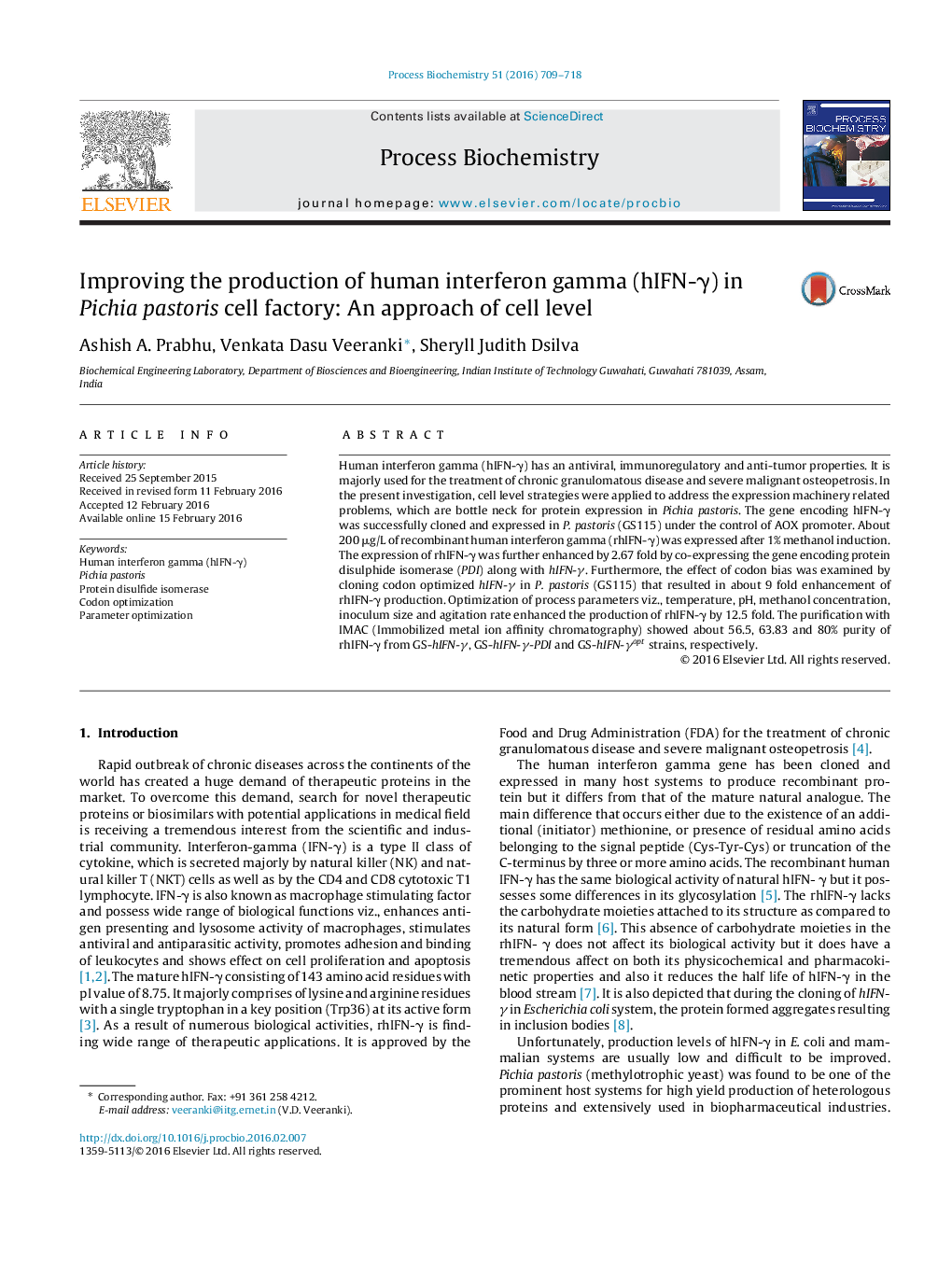| Article ID | Journal | Published Year | Pages | File Type |
|---|---|---|---|---|
| 34177 | Process Biochemistry | 2016 | 10 Pages |
•A cell and process level strategies was carried out for enhancing hIFN-γ production.•PDI enhanced the expression of rhIFN-γ by 0.53 mg/L and 0.03 mg/mL after purification.•Codon optimization resulted about 1.8 mg/L of rhIFN-γ and 0.12 mg/mL after purification.•Process parameter optimization enhanced rhIFN-γ production up to 2.5 mg/L.
Human interferon gamma (hIFN-γ) has an antiviral, immunoregulatory and anti-tumor properties. It is majorly used for the treatment of chronic granulomatous disease and severe malignant osteopetrosis. In the present investigation, cell level strategies were applied to address the expression machinery related problems, which are bottle neck for protein expression in Pichia pastoris. The gene encoding hIFN-γ was successfully cloned and expressed in P. pastoris (GS115) under the control of AOX promoter. About 200 μg/L of recombinant human interferon gamma (rhIFN-γ) was expressed after 1% methanol induction. The expression of rhIFN-γ was further enhanced by 2.67 fold by co-expressing the gene encoding protein disulphide isomerase (PDI) along with hIFN-γ. Furthermore, the effect of codon bias was examined by cloning codon optimized hIFN-γ in P. pastoris (GS115) that resulted in about 9 fold enhancement of rhIFN-γ production. Optimization of process parameters viz., temperature, pH, methanol concentration, inoculum size and agitation rate enhanced the production of rhIFN-γ by 12.5 fold. The purification with IMAC (Immobilized metal ion affinity chromatography) showed about 56.5, 63.83 and 80% purity of rhIFN-γ from GS-hIFN-γ, GS-hIFN-γ-PDI and GS-hIFN-γopt strains, respectively.
Graphical abstractFigure optionsDownload full-size imageDownload as PowerPoint slide
